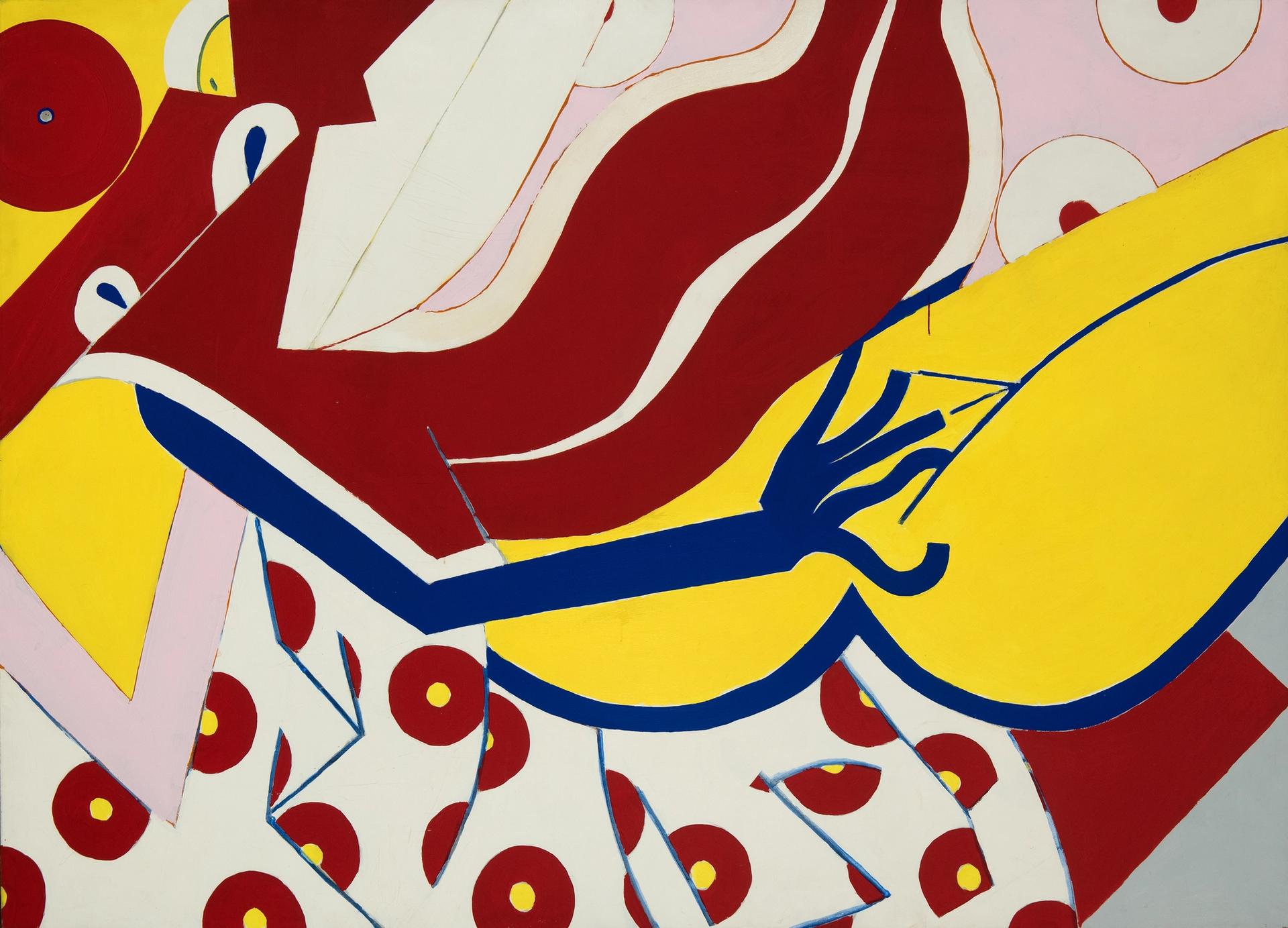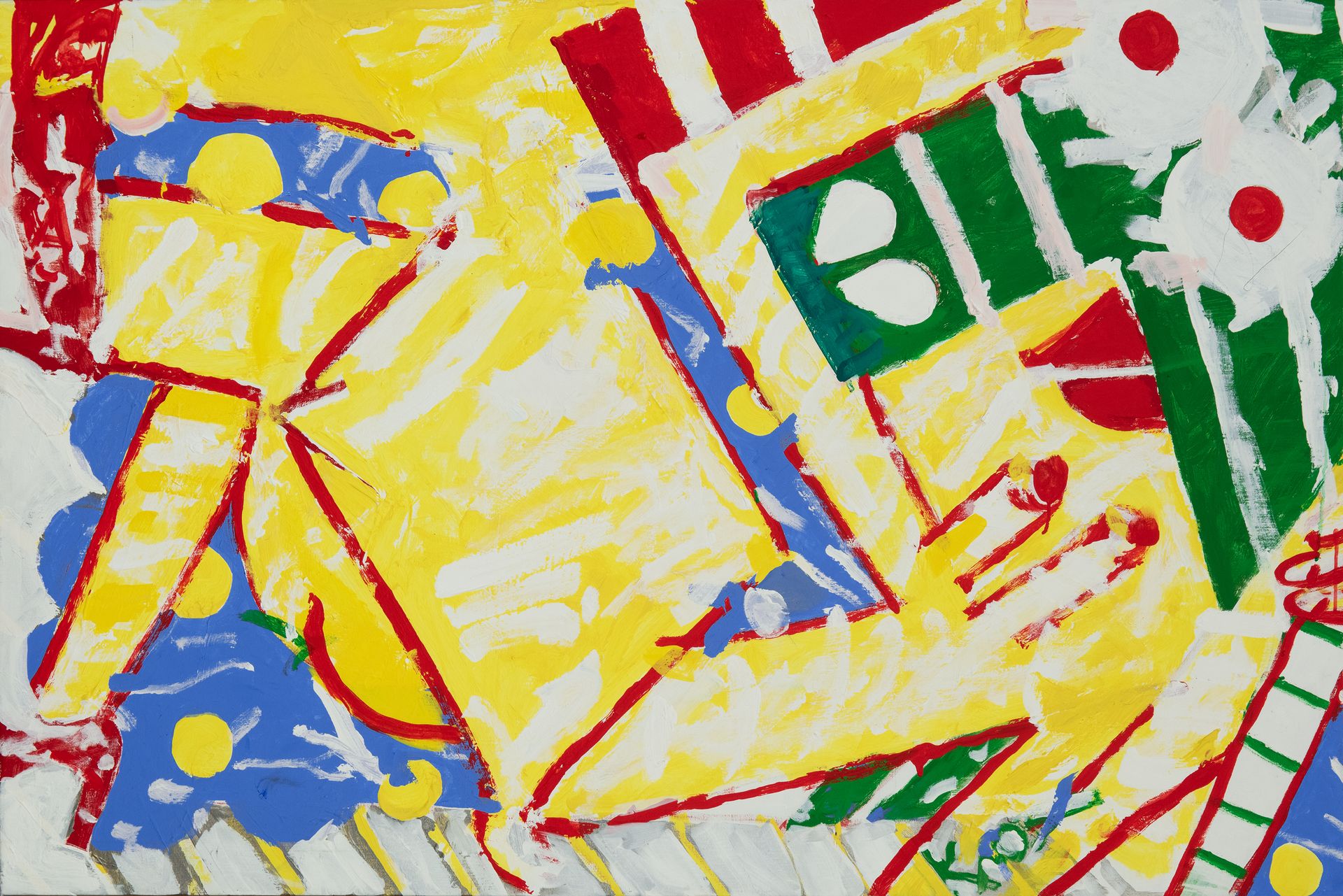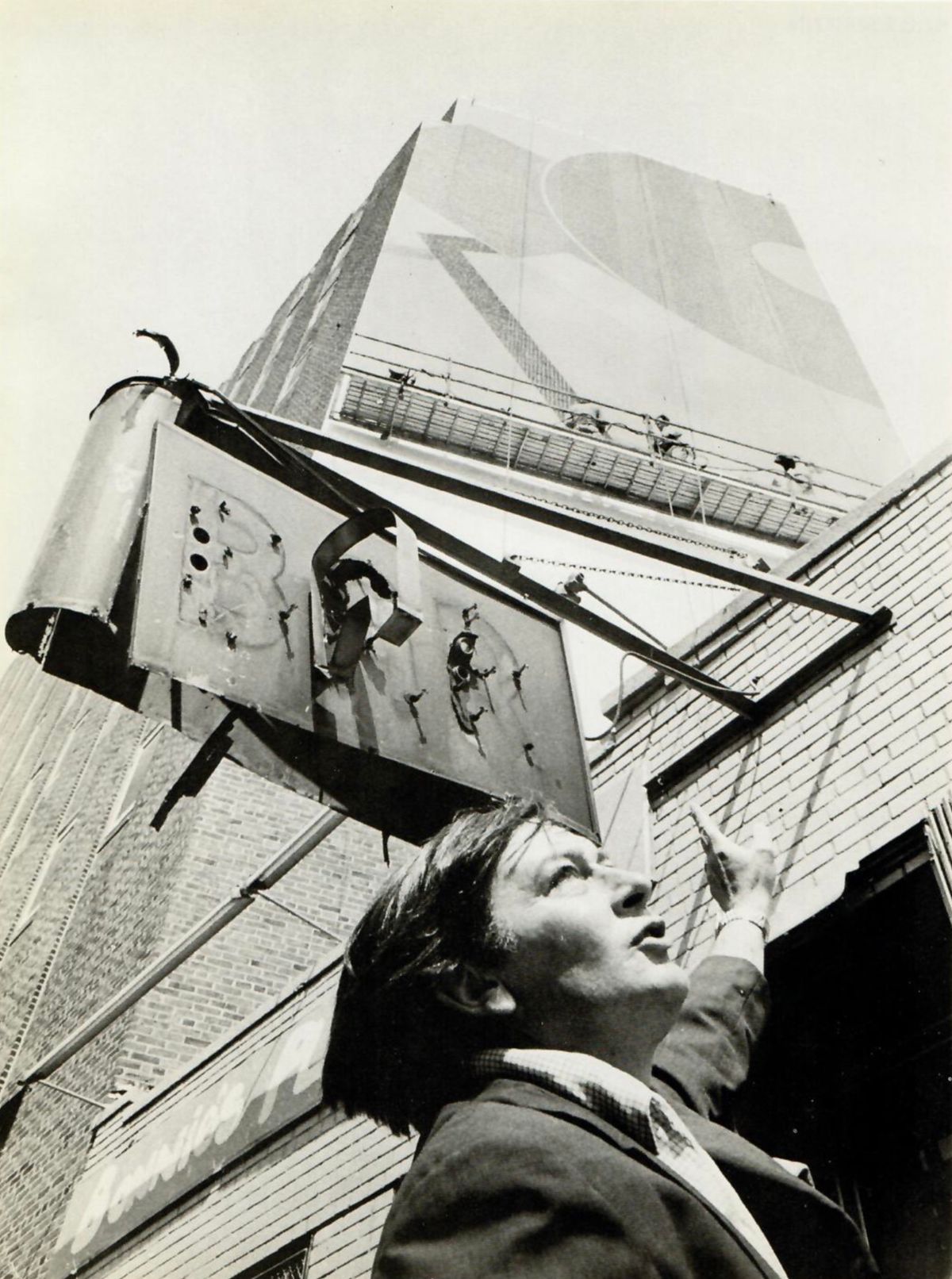Knox Martin, the New York School painter, storied teacher, and longtime fixture of the New York art world, died on 15 May, aged 99. Martin’s work did not adhere to any singular movement, though elements of Abstract Expressionism, Pop Art, and Colourfield painting are all present in the work.
Born in 1923 in Barranquilla, Colombia, Martin and his family moved to New York City only four years later. In addition to being a poet and a painter, Martin’s father, William Knox Martin, was also the first man to fly over the Andes mountains. After serving in World War II, Martin enrolled in the Art Students League on the G.I Bill, where his colleagues included Robert Rauschenberg, Cy Twombly and Al Held.
Martin was at the Art Students League from 1946 to 1950, and in reaction against the drippy, Abstract Expressionist aesthetic popular at the time, he spent those years focusing primarily on figurative work and still-lifes. While he would soon turn back to abstraction, but his understanding of figure and form remained clearly traceable throughout the rest of his life’s work. Martin later returned to The Art Students league as an influential professor.
“He was unique in how he interpreted abstraction in the 1960s, he took it a different direction,” says the gallerist Hollis Taggart, who has represented Martin since 2019. “He painted very angular, linear works rather than the Abstract Expressionist style of abstraction through paint application like impasto techniques. His approach was a little bit more cerebral, and they have a decorative quality that’s different from anything else that was being done at the time."

Knox Martin, Venus of Urbino (around 1972). © 2019 Knox Martin/Licensed by VAGA at Artists Rights Society (ARS), NY.
In 1954, Franz Kline—a friend of Martin’s—included one of his paintings in the Stable Annual, a yearly show held at Stable Gallery, a key gallery of the era, located on 58th street in what was once a livery stable. These annual group shows came to partly define the New York School painters. Gallerist Charles Egan saw Martin’s painting in the Stable show, and he gave the artist his first solo exhibition later that year. The New York Times wrote of the 1954 show’s “several large, almost monumental canvases upon which figure uncouth, rhythmically leaping shapes in violent contrasted blacks and whites”, referring to Martin as “a draftsman of exceptional power” and noting that “his arrival on the scene is a welcome one”. By the 1960s his work had found its way into group shows in a number of museums.
A longtime professor, Martin taught at The Art Students League, Yale, and NYU, among other universities. “He has a legion of loyal students who followed him through all the years and continue to use his teachings. I hear that from them regularly,” Taggart says. His influence, however, far exceeded the bounds of the classroom—Robert Rauschenberg referred to Martin as a “mentor”, and it has been said that a talk on children’s art that Martin delivered before Cy Twombly, Robert Rauschenberg and Susan Weill was the lynchpin behind Twombly discovering his signature aesthetic. “He had a very powerful presence and personality,” Taggart says. “People were attracted to what he had to say.”

Knox Martin, Reclining Woman #4 (2019). © 2019 Knox Martin/Licensed by VAGA at Artists Rights Society (ARS), NY.
“He was a towering figure, he touched a lot of lives and lived a long, enormously creative life, and he worked up until the very last minute,” the gallerist adds. “He was a quintessential artist down to the last breath. We have a video of him making a drawing literally hours before he passed away.”


